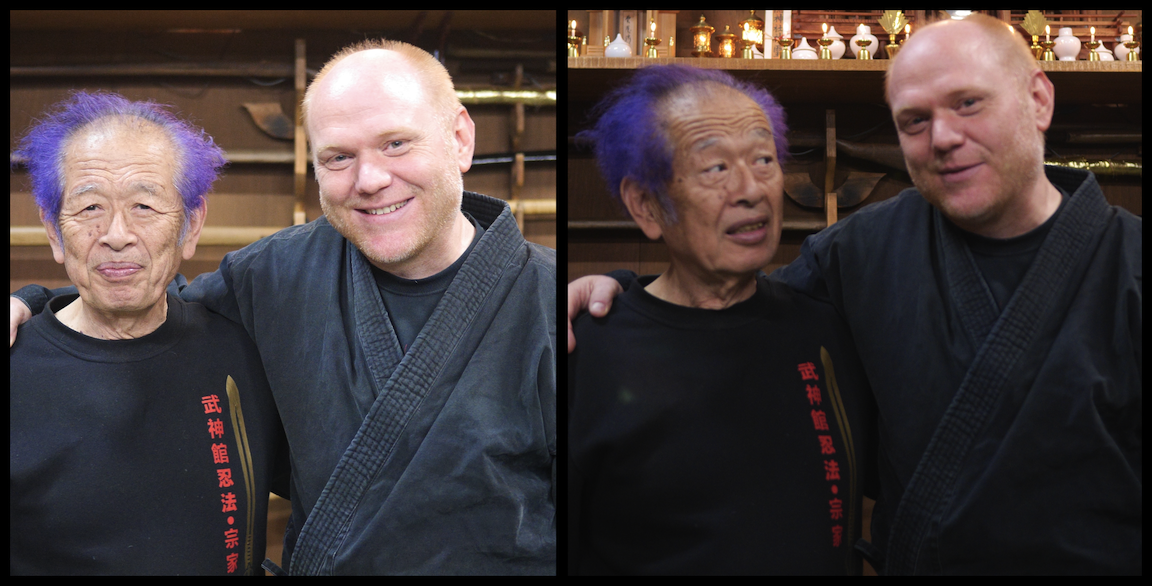 |
| Hatsumi Sensei Throws a Look at Michael Glenn |
The throw happened in the air. In the space of a breath. Soke refers to 空気浮き kuuki uki when you float your opponent in the air. But then he said to throw him like 空気の投 kuukinotou, throwing air.
The day before I was on a quest for an effigy of 役行者 En no Gyōja that I had heard about. He is considered the father of Shugendō. Shugendō followers are on a "path of training to achieve spiritual powers." This involves transforming their bodies through harsh physical endurance.
The 役行者 En no Gyōja I was seeking is one that is not well known and hidden from public view. I literally had to use 体変術 taihenjutsu to get there. As soon as I did, I was mysteriously greeted by a guide that appeared from nowhere. I wrote more about that here: Hatsumi Sensei's 道祖神 Dōsojin NSFW Except in Japan.
Hatsumi Sensei has been training us to understand taihenjutsu. This goes beyond taijutsu and technique. The 変 hen that occurs is mysterious. It comes from a different place than technique. It can be the same source as Shingin and this year's theme.
体変 taihen is an interesting word. It can mean changing the body or changing reality, or, even a strange body or reality. This is what it felt like to witness my training partner Tezuka being thrown by Soke. Reality changed in front of my eyes, and Tezuka experienced something that confused his mind and body. He was disconcerted for the rest of that class and I couldn't help him get grounded again.
Shugendo followers seek to transform their bodies through physical endurance to gain spiritual power and enlightenment. But Soke said you can go directly there without sitting under freezing waterfalls. This is the kind of 体変術 taihenjutsu that Soke is sharing with us here in Japan.
Comments
Post a Comment